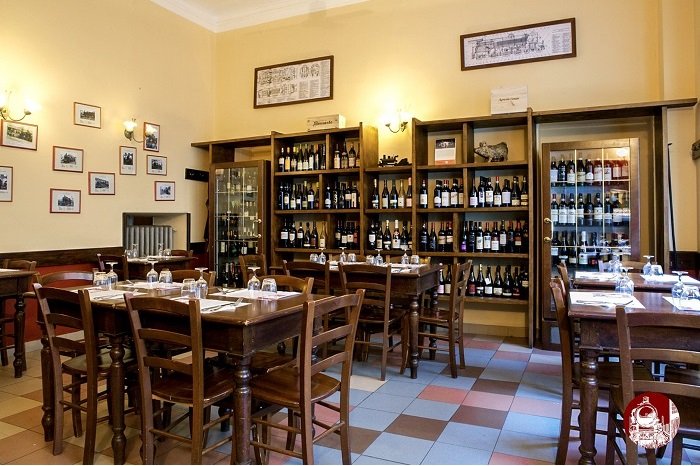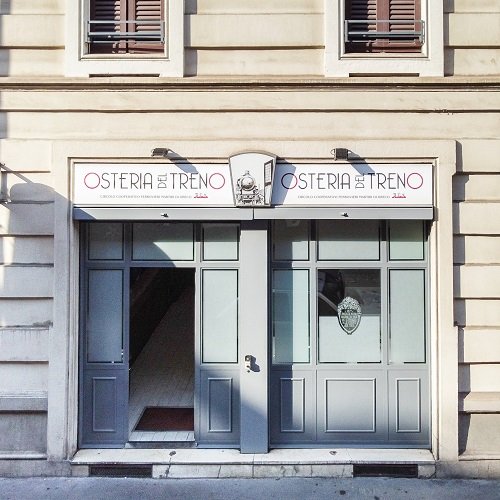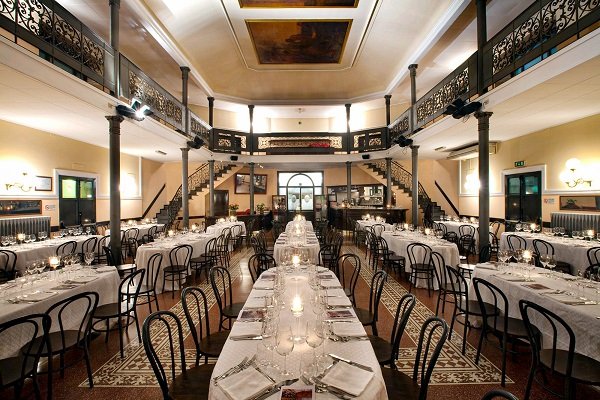At the Osteria del treno in Milan, obviously near the central station, the old Lombard culinary traditions still rule: the proposal of traditional recipes is complete and appetizing.
The advantage of being descended from a Como father and grandmother is that you can call a Milanese person a “southerner.” Although Como was abandoned by my family for Tuscany, some concept of Como and Lombard cuisine has come down to me, making familiar the
mondeghili, the busecca, ossobuco on Milanese risotto, the rostin negàa and even creating a legend around the misultitt.
In fact, for all other dishes, replication was possible even outside their territory of origin; there were no mysteries. The misultitt instead were only available on site, unreachable in Tuscany. My father mentioned them all the time, but was not given to tasting them-a mysterious object. When I found them, proposed as “taglierini with lake missoltin” at Osteria del Treno in Milan, I literally dove right in and enjoyed them with great satisfaction.
An explosion of flavors

A pleasant explosion of savory flavors, scents of leaves and lake grasses with umami well in evidence. The proposal with noodles complements its aromatic complexity and absorbs its brackish excesses. I immediately associated them with colatura di alici di Cetara, but immediately the existential question arose: why has colatura risen to worldwide fame, is available everywhere and at all times of the year, and is sought after and offered by top chefs, while the misultitt, an equally savory and tasty freshwater product rather than seafood, but this means little, they are virtually unknown outside Lombardy’s borders as well as being available with difficulty and only at restricted times of the year?
What are these misultitts? (or misoltini)
These are simply the agoni or lake sardines which are caught in good quantities in May and June in the icy waters of Lake Como. Quantities that allow long storage through cleaning, air drying (natural or forced), and subsequent salting. After that, they are arranged in layers, with bay leaves, in wooden or tin barrels so that they can be stored for a long time.These containers, called ‘missolte,’ are closed with a lid on which weights should be placed, so that the fish, when pressed, emit an oil that contributes to their perfect preservation. Misultitt is the Como version of the name misoltini and the most common recipe calls for them to be seared quickly over coals and served with polenta. Today, in the age of wild e-commerce, they can also be found online preserved, but in minute quantities and almost in secret, nothing like, in short, the “anchovy drippings” phenomenon that has invaded the gourmet world.
Back to the Osteria del Treno

Beyond these considerations, high praise to Osteria del Treno, which offers them seasonally on the menu. The venue is an icon for those who have been following the work of the SlowFood movement since its earliest days. I remember the 1990s for two classics. Back then, each Vinitaly was preceded by a Slow hangout, the night before the fair opened, at the Ochina Bianca in Mantua. While for stops in Milan, a visit to Osteria del Treno was de rigueur. Unfortunately, the former has been surrendered, while the latter fortunately enjoys excellent health.
We are in the premises of a former railroad machinists’ clubhouse. And the atmosphere is that of an old-time Milan. The decorum of the Railwaymen’s Mutual Aid Society, founded in 1877, can be breathed in the halls and the charming Art Nouveau hall: the resulting feeling is that of a reassuring, enveloping and tranquil comfort that puts one at ease without the coldness of formal excesses.
The Bissolotti family at the helm for three decades
The Osteria has been run for more than 30 years by the Bissolotti family under the motto “always more osteria” and attention to the quality of raw materials Is always absolute. About misultitt we have already mentioned, but the proposal of traditional recipes is complete and appetizing.
Crispy and flavorful mondeghili, nervetti, yellow risotto with marrow and ossobuco in gremolada faultless, textbook cassoeûla. For those who are nostalgic for certain flavors, the choice is challenging. Add to this a wide and thoughtful range of artisanal cured meats and cheeses, and the risk is to go into overdose. I couldn’t pass up a taste of Cappuccino del Magut (cream of Pandino robiola cheese), raw milk Salva cremasco, and an alpine Vezzena.
Osteria dishes and daily specials

The offer includes a quick lunch menu with “tavern dishes,” accompanied by “dishes of the day” that vary daily with the season and the market. Dinner and weekend menu, more complete, always shaped by market availability.
La wine list in such an osteria can only be populated by small producers from all over Italy, often organic and biodynamic. Affordable prices and consistently controlled quality proving that you can always Drinking well without taking out mortgages. Very entertaining proposals from Oltrepò, Valtellina, and especially the Piedmont side of Spanna: Bramaterra, Gattinara, Ghemme, Sizzano.
In the end, thanks in part to friendly and unobtrusive service, one leaves the restaurant with a reassuring sense of well-being and a desire to return.





